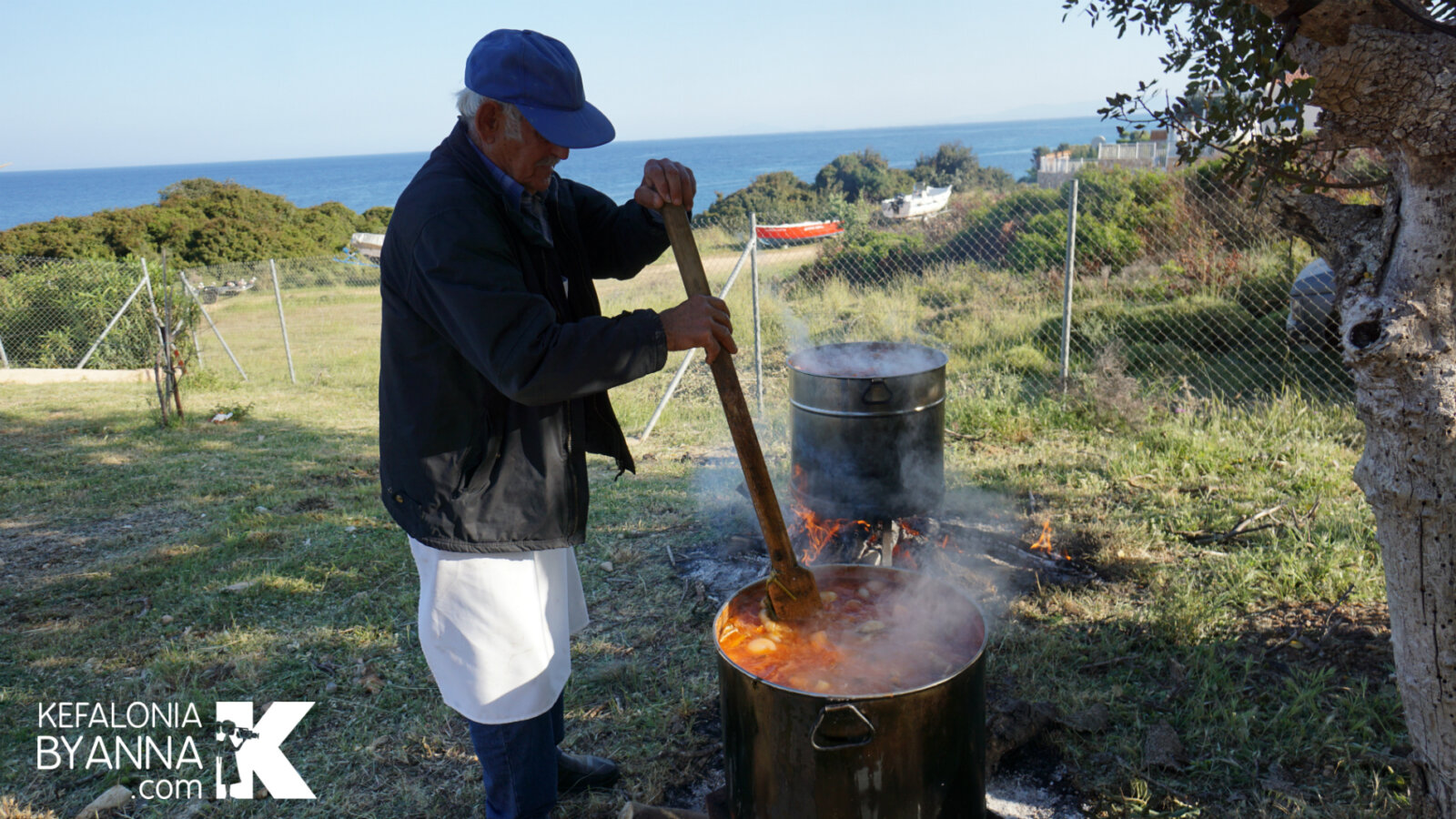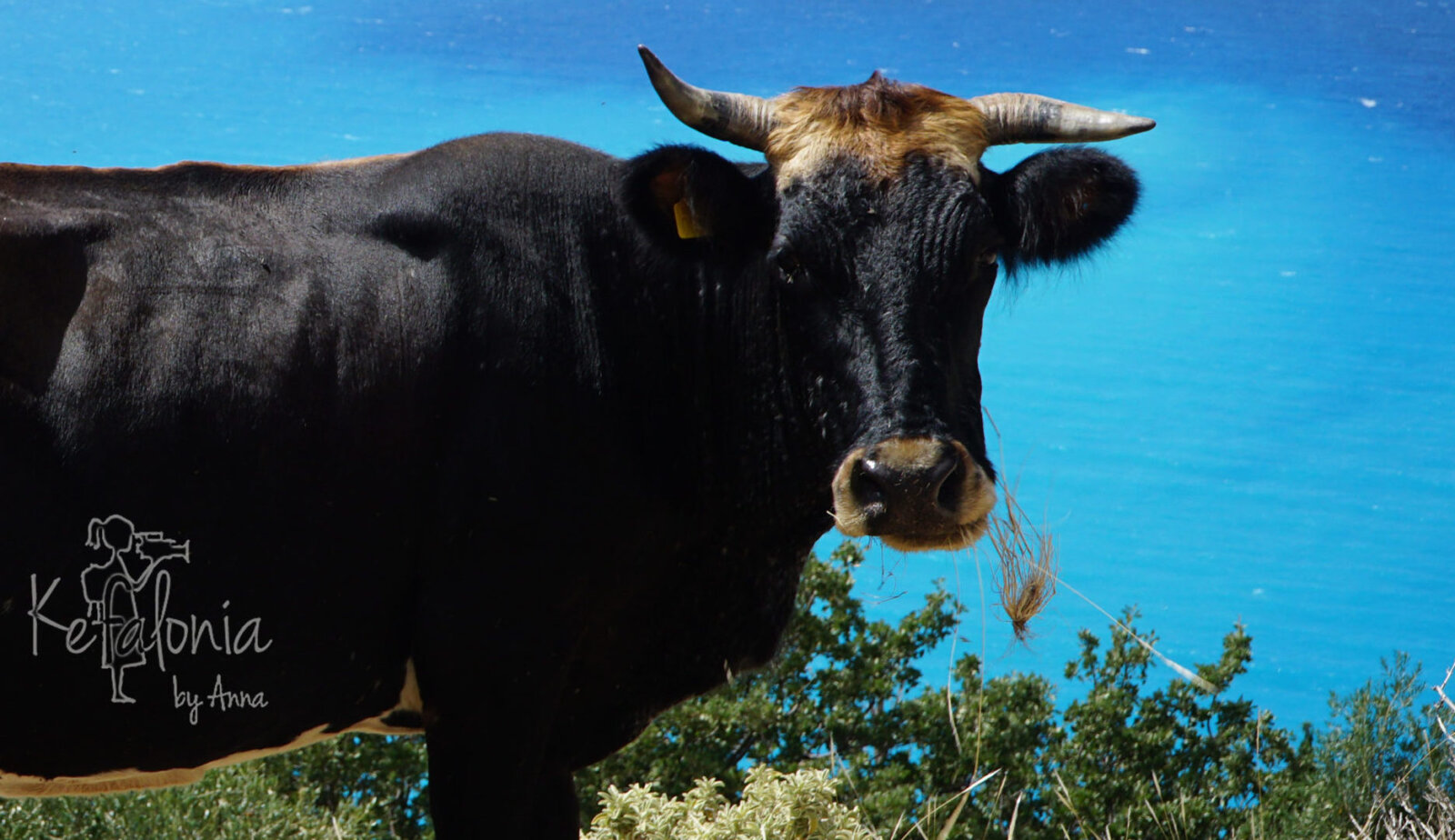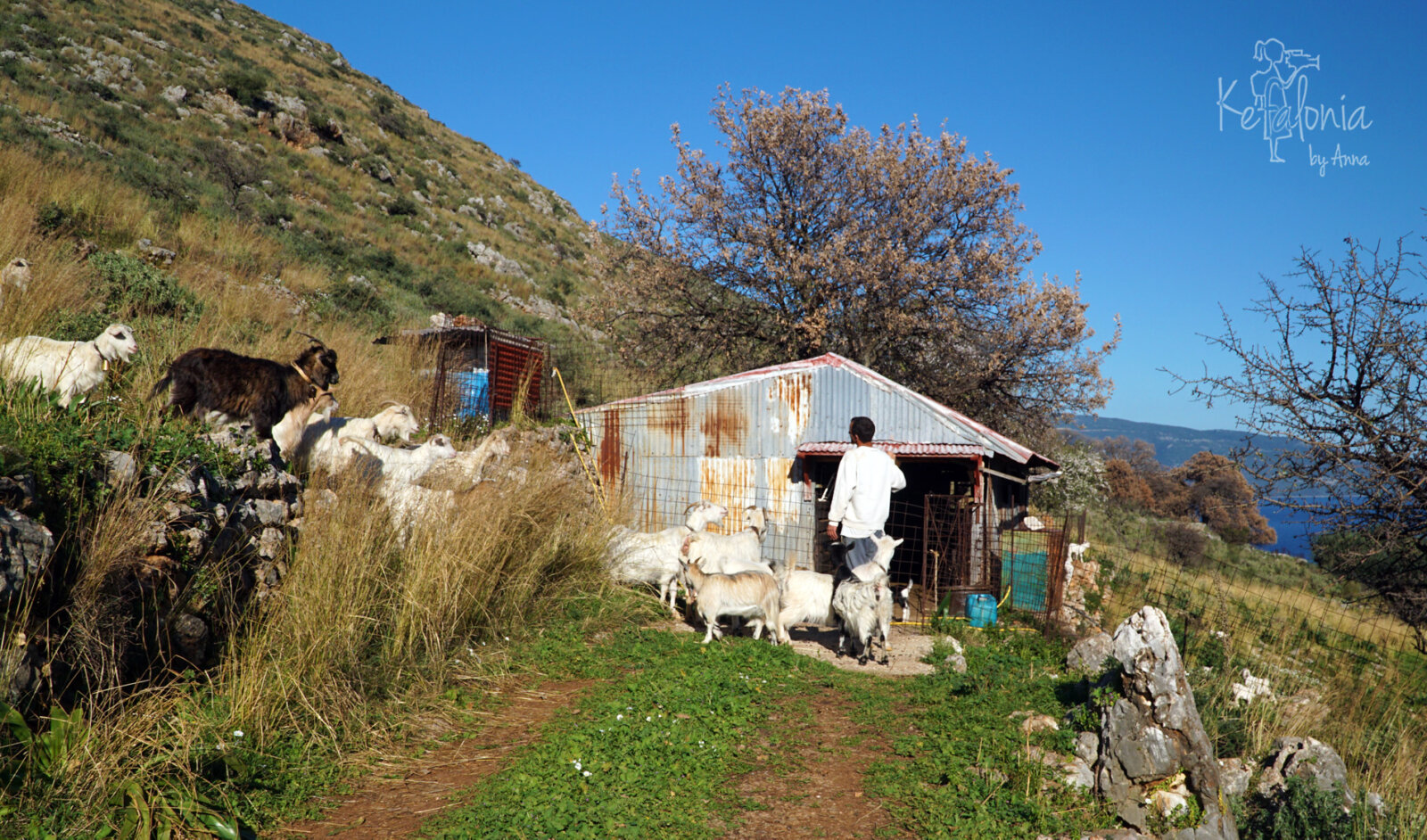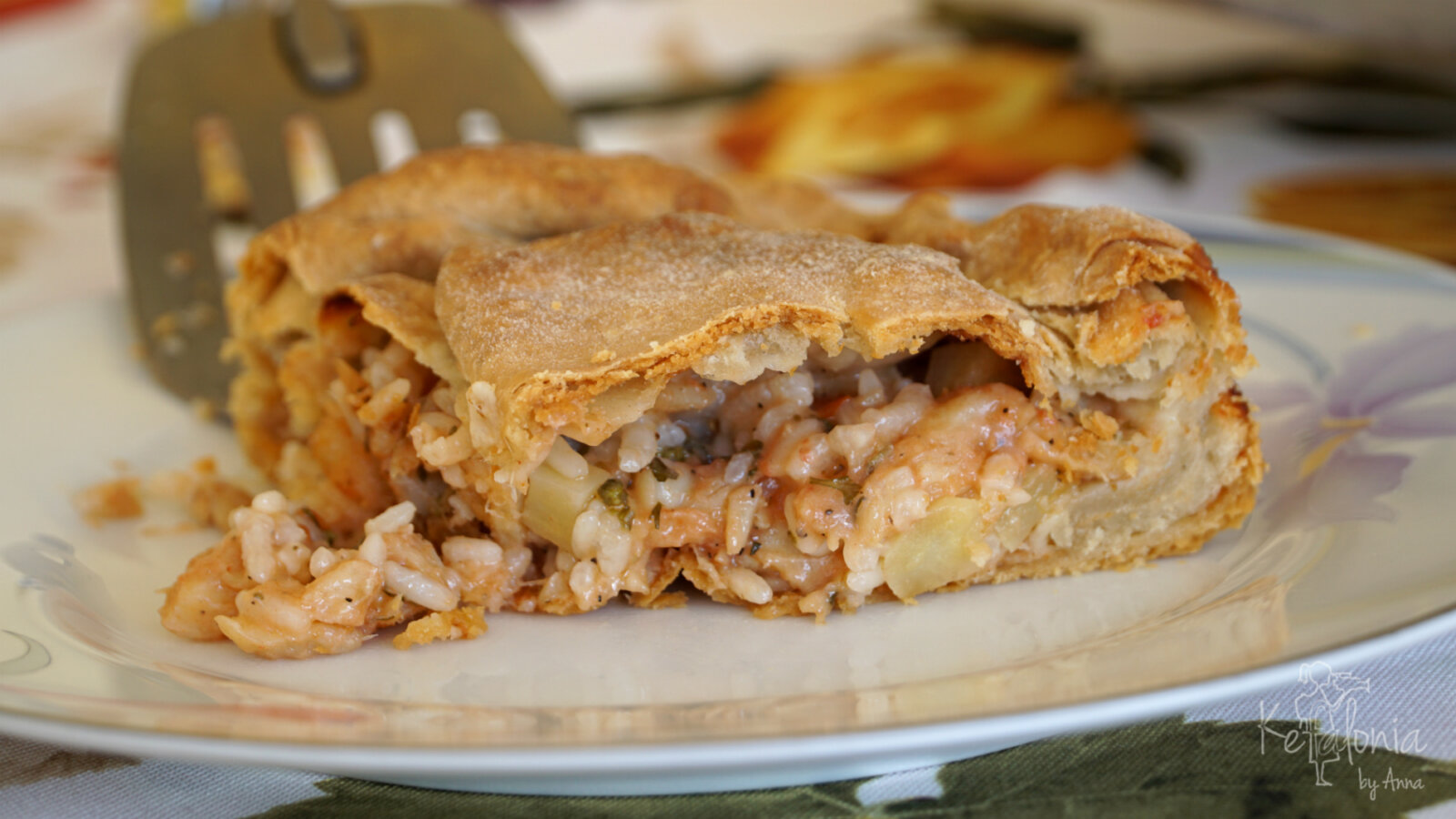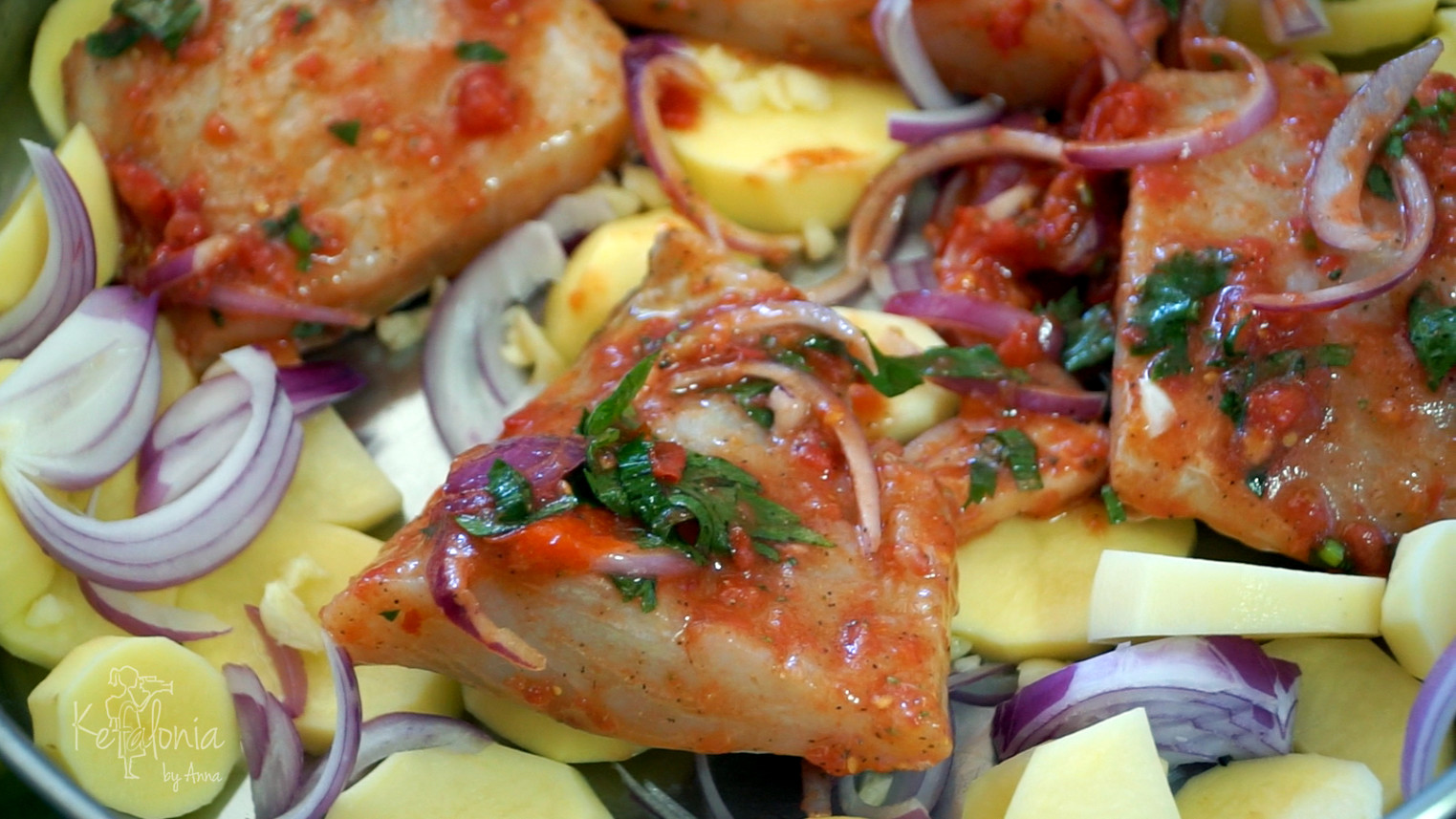MEAT
Like Ulysses himself, the shepherd is a typical local job and shepherding continues to be an important sector in the local economy. The animals, in particular goats, sheep, and a smaller percentage of cows, spend their existence mostly in the wild eating mainly wild plants. Meat, milk, yogurt, butter and cheese are the derivative products of this very strenuous job. The most commonly consumed meat in Kefalonia is goat, sheep/lamb, veal/beef, rooster, chicken, rabbit and hare. Some of the traditional recipes include Kefalonian meat pie (kreatópita), meatballs in tomato sauce (keftedákia), beef in tomato sauce, rooster with thick spaghetti, roast rooster with potatoes, rabbit in vinegar, chicken tserépa (tserépa is an age-old cooking technique, a traditional clay cooking vessel used over charcoal), and pastítsio (oven baked pasta dish with thick layers of pasta, ground beef or goat or lamb and bechamel white sauce). It is also possible to find hare based dishes, like hare in red sauce. Animals on Kefalonia are bred almost in the wild and you will probably experience it first-hand in funny meetings, especially with goats, during your holiday.
CHICKENS & EGGS
You will usually see domestic chickens walking freely on the roads of Kefalonia, but do not worry they are not runaways they are just grounded breeding birds. A lot of people still keep chickens in order to have fresh eggs at home whilst some others have a proper breeding programme. The eggs produced on the island come from grounded breeding animals and due to that they are more tasty. The chickens spend their life outside, they have a well balanced diet and are not raised under the appalling conditions with which the chickens raised in the intensive industry suffer. Kefalonian cuisine has two famous recipes with eggs; strapatsáda (fresh grated tomatoes, white Kefalonian cheese and eggs fried in a pan) and omelette made with the addition of wild asparagus.
FISH
“Káthe prágma ston kairó tou, ki o koliós ton Ávgousto” (everything at is time and the Mackerel in August) says a Greek proverb. Follow the popular wisdom and consume seasonal fresh fish! You can find the traditional small fishing boats (kaḯkia ton psarádon) that sell fresh fish daily, early in the morning in all the marinas and each village by the sea. In the last twenty years the traditional kaḯkia has dwindled, this had led to less young people have learned the ancient fishing techniques and also a decrease in the demand of the traditional craft of boat-building, this is why it is important to support this kind of traditional local economy. There are also fishmongers who drive around the villages; listen out for them singing the list of the fresh fish they have for sale on a loud speaker. If you would like to buy some fish go outside when you hear them and wave when you see them, they will stop and show you what is on offer. A fresh fish is healthier than fish farmed intensively. The Archipelago’s Guide to sustainable seafood consumption in Greece will provide you with information about what seafood is sustainable to consume, and when, and has a translated list of the most common fish. A lovely summer-time Kefalonian fish based recipe is Bourgeto, whitebait in tomato sauce, or oven baked sardines, and in winter, cod fish served with skordaliá (potatoes and garlic dip).

